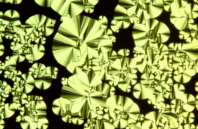For the first time, researchers performed computational logic operations with a liquid-crystal-based chemical device using electric fields and ultraviolet light.1 The device and the methods used open up research possibilities that include low-power, high-performance computer chips.
Keiichi Yano, Yoshimitsu Itoh, and Takuzo Aida from the Department of Chemistry and Biotechnology at the University of Tokyo and their team developed a device which demonstrates functions useful to computation. Conventional computers use electric charge to represent binary digits, but the researchers’ device uses electric fields and UV light, which could allow for lower power operation and create less heat than logic based on electric charge.
The device is also vastly different from current semiconductor chips, as it is chemical in nature; it’s this property that gives rise to its potential usefulness in computation. In addition to the power and heat benefit, this device could be manufactured cheaply and easily. The device has disk and rod-shaped molecules that self-assemble into spiral staircase-like shapes called columnar liquid crystals (CLCs) under the right conditions.

 (585) 768-2513
(585) 768-2513

